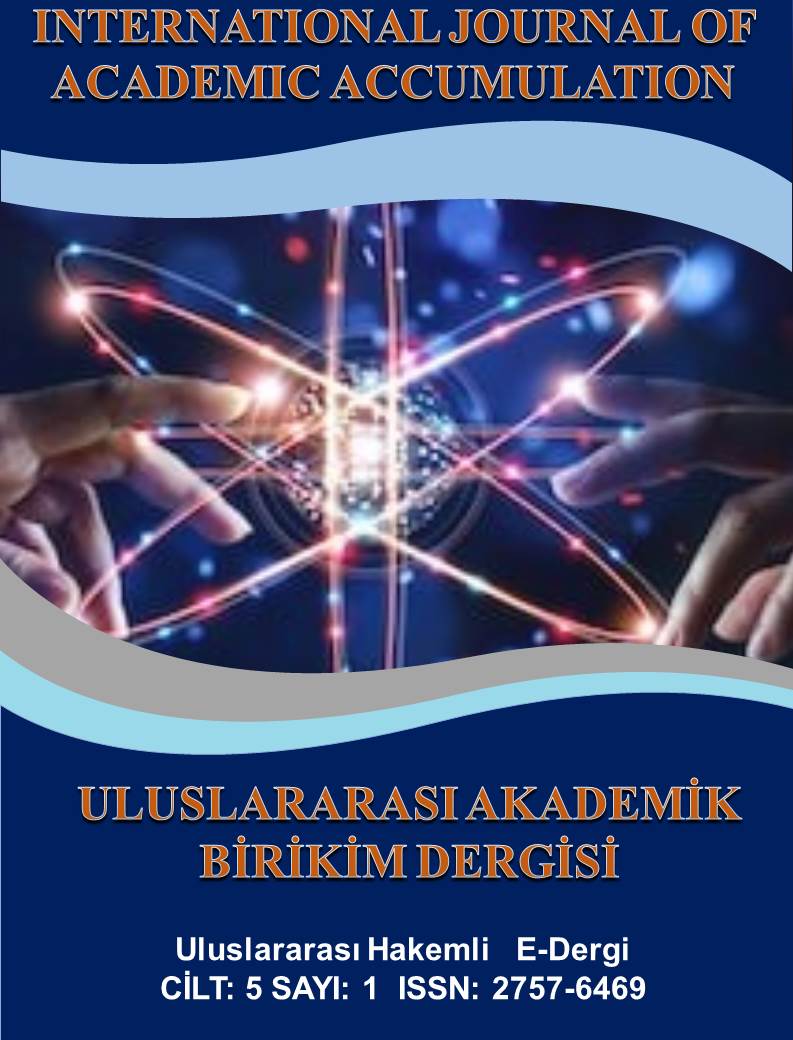A Deep Learning, Machine Learning and Data Mining Analysis of Gender Pay Gap and Its Influences
Cinsiyet Ücret Açığı ve Etkilerinin Derin Öğrenme, Makine Öğrenimi ve Veri Madenciliği İle Analizi
Keywords:
Gender Pay Gap, Discrimination, Income Inequality, Deep Learning, Data Mining, Machine LearningAbstract
Throughout the history several genders, races, ethnic groups, workers, individuals with several sexual preferences and orientations, individuals with different colours, life styles and preferences, freedom of speech and thought, in a broader range many human beings, animals qualified accaptence by different members of the society and won their rights in the legal framework and constitutions by law. Human rights, animal rights, worker rights, women rights, equality of women and men, right to elect and to be elected, freedom of speech and thought are some of these rights and developments human race experienced and saw during time as a result. However as in the past it is misfortune in some of these geographies and business settings still some forms of discrimination, stigmatization and problems alike occur. As the paradigms of the society, change and new developments enter into our lives we see many changes and developments in our lives which are strengthened with rules, regulations and legislative frameworks. However, unfortunately there is still lack of equal access to resources, double standardizations, inequalities of opportunities with several inequalities in today’s world. In this research gender pay gap, which is frequently cited as one of the important problems in today’s world is examined with potential influences associated with it using deep learning, machine learning and data mining methodologies.
References
Kotler, P. (1991), Principles of Marketing, Englewood Cliffs - Prentice Hall, New Jersey (US).
Kotler, P. (2000), Marketing Management, Upper Saddle River - Prentice Hall, New Jersey (US).
Malhotra, Naresh K. (2007), Marketing Research: An Applied Orientation, Upper Saddle River - Pearson/Prentice Hall, New Jersey (US).
Yavuz, Ö. (2009), “An Early Warning System Approach for the Identification of Currency Crises”, Master Thesis, Bahcesehir University Graduate School of Sciences, Istanbul.
Yavuz, Ö. (2018), “Marketing Implications of Participative Behavior in Virtual Communities”, Doctoral Thesis, Bahcesehir University Graduate School of Social Sciences, Istanbul.
Yavuz, Ö. (2021), A Data Mining Analysis of Coronavirus Cases and Vaccinations in The City of London, Astana Publisher, Ankara.
Yavuz, Ö. (2021), “A Public Perceptions Analysis with Data Mining Algorithms”, 2. International “Başkent” Congress on Physical, Social and Health Sciences, 25-26 September – Ankara, pp.69-73.
Yavuz, Ö., Karahoca, A. and Karahoca, D. (2019), “A Data Mining Approach for Desire and Intention to Participate in Virtual Communities”, International Journal of Electrical and Computer Engineering, S.9(5), pp.3714-3719.
Yavuz, Ö. (2021), “A Leading Indicator Approach with Data Mining Techniques in Analysing Bitcoin Market Value.” European Journal of Science and Technology.
Yavuz, Ö. (2022), “An Optimization Focused Machine Learning Approach in Analysing Arts Participative Behavior with Fine Arts Education Considerations.” International Scientific and Vocational Studies Journal.
Yavuz, Ö. (2022). “A 21st Century Approach in Analysing Health Precautions in London with Machine Learning Driven Data Mining.” European Journal of Science and Technology.
Yavuz, Ö. (2022). “Nitel ve Nicel Araştırma Tasarımı Uygulamasıyla Etanol Kullanımını ve Etkilerinin Anlaşılması.” European Journal of Science and Technology.
Yavuz, Ö. (2022). “A Classification and Clustering Approach Using Data Mining Techniques in Analysing Gastrointestinal Tract.” International Scientific and Vocational Studies Journal.
Yavuz, Özerk. (2022). Engıneerıng & archıtectural Scİence - 2 (A Multdıscipliner Approach).
Karahoca, D., Karahoca, A. and Yavuz, Ö. (2013), “An Early Warning System Approach for the Identification of Currency Crises with Data Mining Techniques”, Neural Computing and Applications, S.23(7-8), pp.2471-2479.

